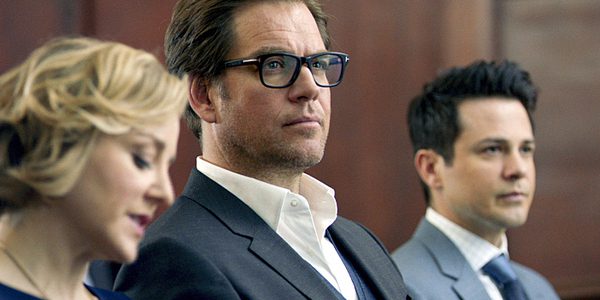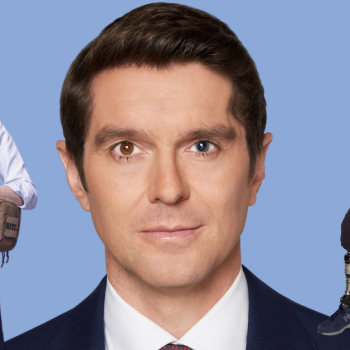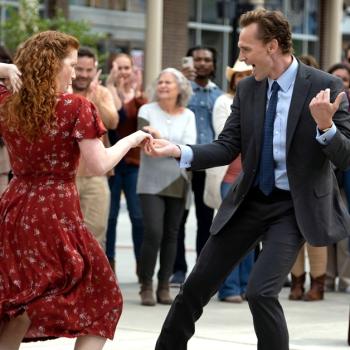 At the recently completed summer edition of the Television Critics Association Press Tour, journalists who cover TV across North America assembled in a hotel in Beverly Hills to attend press conferences and events on new TV shows for the summer and fall.
At the recently completed summer edition of the Television Critics Association Press Tour, journalists who cover TV across North America assembled in a hotel in Beverly Hills to attend press conferences and events on new TV shows for the summer and fall.
There was a lot of talk about “diversity” — or, in the new incarnation of the phrase, “inclusivity.”
One of the most heated sessions on this topic was with new CBS programming chief Glenn Geller, who announced in his debut session in January that he was gay (and therefore, as he put it, “diverse.”) Here’s a sample question:
Hi, Glenn. So, Glenn, you just showed a number of black, Latino, supporting actors, but you still have no people of color as the leads in your new fall shows. Why is it so difficult to get more inclusion for people of color in the top level of casting at CBS? And what message does it send that the leads of your shows are all heterosexual white men?
While he said several times that the network needed to “do better,” Geller went on to defend the casting on the shows, also mentioning how many “diverse” people — in Hollywood-speak, that means female, non-Caucasian or LGBT, and has nothing to do with a wide spectrum of political or religious ideas — are included in supporting roles and behind the scenes.
Specifically regarding LGBT characters, a subject obviously close to his own heart, Geller said:
I think things are definitely shifting. And in terms of LGBT representation, I think we have more LGBT characters on this coming year than ever before. We have in our newer series, especially on “Bull,” and “The Great Indoors.” In the second year of “Code Black,” Malaya on the show is a lesbian. Vanessa Ferlito, who we cast in “NCIS: New Orleans,” her character is lesbian and they’re doing a storyline a little later in the fall where the audience will understand that and see that. And Laverne Cox in “Doubt,” which will be on later in the season, is a historic role. She’s going to be the first transgender actress ever to play a transgender series regular character. I mean, that is huge. I’m very proud of that. And I think as we continue to put new shows on the air, those trends will continue, and I’m very proud of that.
This pressure for Hollywood’s definition of “diversity” isn’t necessarily coming from the general audience in all cases, but from the media and people within the entertainment industry.
The idea of of asking that TV and movies, and the people who make them, represent the real demographics of the nation more accurately — especially in terms of women, who are half the population (and not all 27 and looking like models) — is a good thing, but that’s not the only agenda at play.
In political and ideological terms, entertainment and media folks tend to lean more left and more secular than the bulk of the nation. Their concerns reflect their beliefs, and they have no reticence in making their demands known to the industry. Buttressing the efforts of people within the media and Hollywood are a variety of activist groups — such as LGBT-positive GLAAD — which are well-funded, politically savvy and aggressive.
They don’t win all the battles, but they never let up or give up. Conversely, in advocating for the presence of accurate and sympathetic faithful Catholic characters and fair portrayals of the Faith, we’re not even in the ballpark, or the parking lot … or the same side of town.
The result?
As Catholic film critic Deacon Steven Greydanus posted recently at Crux:
Hollywood films have long been criticized for poor depictions of LGBT characters. In its latest annual report, GLAAD argued that Hollywood depictions of LGBT characters actually got worse in 2015.
And yet, as characters in Hollywood films, LGBT individuals are far better represented than Christians, despite being a tiny fraction of the population in comparison.
In 2015, of 126 major movies surveyed, GLAAD found 22 films with identifiable LGBT characters, and eight films with notable LGBT characters that were developed as characters and that mattered to the story.
Only eight such films was a recent low by GLAAD’s reckoning. If contemporary Hollywood ever released as many as eight major films in a single year with developed Christian characters that mattered to the story, it would be unanimously proclaimed the Hollywood “Year of the Christian.”
And that’s not even counting TV networks, which are moving to include many more LGBT characters. Sometime soon, it may be hard to find a primetime scripted show without at least one, if not more.
But a recent Pew study said that 70.% of Americans identify as Christian, with 20.8% of that specifically as Catholic.
I haven’t done the math, but I don’t think the numbers on TV or in movies reflect those stats.
Real influence in Hollywood either comes from without, in the form of government regulation (which is problematic for people who respect the First Amendment) and profit (or lack thereof); or from within, from people either in the industry or allied to them.
Every dollar that Catholics pour into entertainment that either ignores or vilifies them and the Faith tells Hollywood not to take our concerns seriously. We can’t always fund movies and TV shows that include us in a positive light, but nothing’s forcing us to reward those that don’t.
Catholics are underrepresented as pivotal creative types and decision makers in the entertainment industry, so our voice at the table is muted. And when we are heard, it’s usually negative and from people outside the industry, so it has little effect.
But we can make a difference. The trailer and pilot for ABC’s Irish-Catholic-family comedy “The Real O’Neals,” which premiered in March 2016, reflected inaccurate, outdated and insulting Catholic stereotypes. Objections were raised. When the show came on the air, the sharpest of the anti-Catholic content was apparently sanded off.
Bill Donahue of the Catholic League, one of the show’s fiercest critics, is hardly now a fan, but he did admit, in a post about the show’s renewal:
It must be noted, however, that our campaign has not been without effect: the scripts were rarely of a blatantly anti-Catholic nature …”
Love him or loathe him, Donahue is fearless and relentless. But there’s only one of him, and his pugnacious style likely loses as much support as it wins. His methods, though, represent only one way to fight the culture wars, if we’re willing to do it.
No one gives anyone anything in Hollywood. Those on the secular left work tirelessly to promote what they hold dear. One day, we will be asked why we didn’t do the same for Truth, Beauty and Goodness.
Image: Michael Weatherly (center) in “Bull,” ©2016 CBS Broadcasting, Inc.
Don’t miss a thing: head over to my other home at CatholicVote and like my Facebook page; also like the Patheos Catholic FB page to see what my colleagues have to say.













